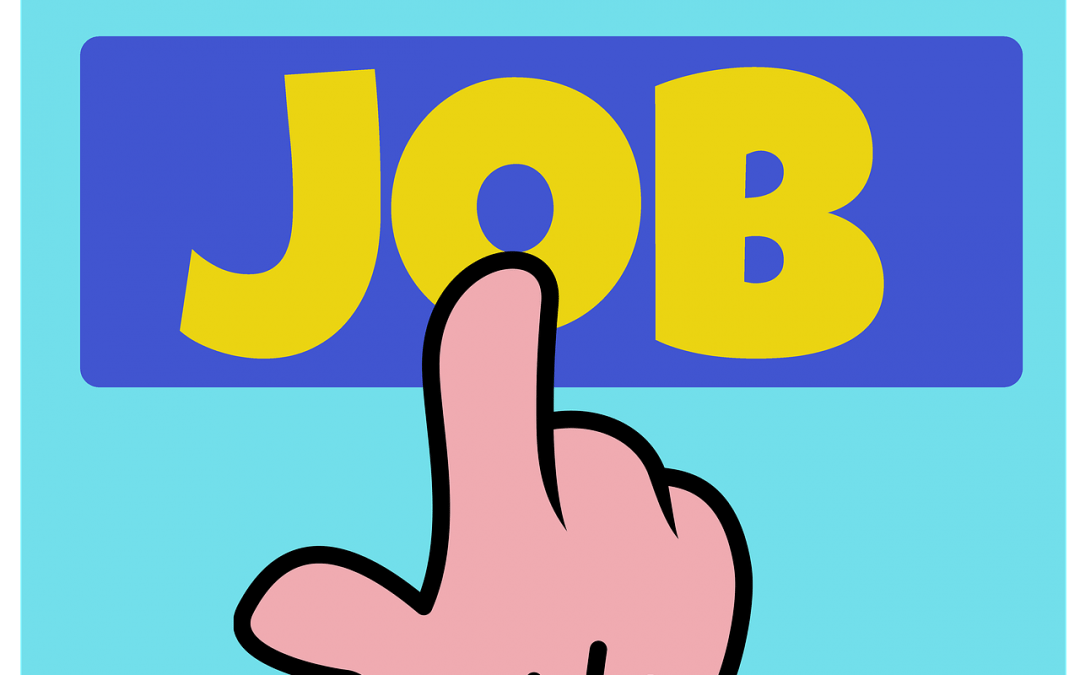
by Employment Screening Alliance | Sep 14, 2016 | Employment Screening
Employment Screening | How to Help Your Employees Be More Professional Pt. 2
Employment Screening | Post-hire: Help your employees become more self-aware. If you already have an employee who has the top three soft skills that you want, great. Help him or her develop the other soft skills needed to succeed at your company, whether it be through a workshop or conference or with the help of a mentor from your organization. If the employee does not have the soft skills required, you need to ask yourself, based on his or her personality and performance, if those skills can be developed. If needed, get some feedback from your human resources department or others on your leadership team. Ask for help and input. One first step to rectifying the situation can be to require all employees to take a personality or career assessment. This will help them learn more about themselves and their strengths as well as what they need to work on, and it will help you identify other team members who may be able to help them. Go over the results with the employee, and from there, help him or her set two to three goals for the next two months. Develop a plan together for how to tackle the issues, and provide the employee with the support or tools needed to do so. Set a date to review the results. –
Create an ongoing process to help employees improve. A one-time test generally isn’t enough to help employees become more polished. Remember that an employee is a long-term investment that needs long-term care. This could mean starting with an assessment you will commit to use with your team, like the StrengthsFinder assessment, followed by aseries of check-ins with employees that focus on soft skills. Every time you have a performance review, build that into the agenda. If needed, you can have him or her shadow more experienced employees at certain times or become a part of a mentoring program. Decide what would work best with your culture and for this employee’s role, but it is important to have a program in place and set the intention for a positive impact. Make sure your employees know that your program is designed to help them become better employees and more successful in their careers, and that it won’t be used as a measuring stick to grade them. If it’s not working or the employee is unwilling to grow and improve, it may be time to consider whether he or she is a fit in the long run. But in the meantime, if you are implementing an improvement program, give employees the tools and best chances to improve. -US News
Learn what ESA can do for you! Call 866-830-3724 to discuss employment screening services or complete the form on
www.esascreening.com now!

by Employment Screening Alliance | Sep 7, 2016 | Employment Screening
Employment Screening | 5 Ways to Guarantee You Won’t Fill Your Open Roles Pt. 2
Employment Screening | 3. Set your salary, equity, or benefits below market rate
“Location, location, location” isn’t just for real estate. Where you’re expecting people to work is just as important as what you’re expecting them to do when you’re determining compensation packages. A dead giveaway that your compensation is off-base is when you make plenty of offers but get turned down constantly.
If this is happening to you, consider asking yourself why it’s happening.
- Does our package make sense for our location? Hiring in Seattle looks very different from hiring in Chicago. The Bay Area, the peninsula, the East Bay, and San Francisco proper have very different compensation environments based on their desirability. Don’t just guess at this – figure out how far you are from local expectations. (by talking to colleagues or recruiters in your area).
- Who are our competitors? Not from an industry perspective, but who are we competing with for candidates? If you’re a startup directly competing with Google or Facebook, you’re going to struggle with losing people to compensation you just can’t match (so work on your selling skills!).
- Does our package feel “fair”? If you’re a startup looking for a principal engineer without offering any equity, that engineer is going to feel like the offer is unfair. If you’re offering a below-market package (which startups have to do sometimes!) to a senior-level CMO without any explanation, you should expect her to walk. It’s not that you have to shell out salary or equity all the time for top talent, but you need to put your offer in a context that will feel “fair” to the candidate.
4. Make the job description boring or confusing
Better yet … don’t provide potential candidates with a job description.
I’ve worked with far too many companies who struggle with hiring. That’s typically why they come to us!
One thing they’ve all had in common was that their job descriptions needed major revamping. I’ve even seen a team that was so desperate for good candidates that they created an internal competition to rewrite the job descriptions for the open roles.
If you discover that your current job description for a software engineer is just a mishmash of generic requirements, specific duties, and confusing jargon, then it will be no wonder that nobody is applying.
5. Don’t offer any career path
A good friend of mine recently shared the following story.
When people from other parts of her company would look at the open roles on her team, they’d ask current members of the team about career paths and promotions. You know what our answer was? Crickets chirping.
That’s right – they had never promoted anyone. There was absolutely no career path. Apparently there was simply working 80-100 hour weeks until you burned out. That’s all.
All the fun in the world won’t make up for having a company or a team that won’t help someone’s career. If that team wanted to pull people into it, all it had to do was to promote someone (and there were many someones deserving of promotion) or have a concrete promotion roadmap to show to candidates. But it never did.
Not having a career path hurt that team in other ways as well, because not only could it not hire, but it started bleeding its best talent. It turns out that having a career path both attracts and keeps top talent.
Learn what ESA can do for you! Call 866-830-3724 to discuss employment screening services or complete the form on www.esascreening.com now!

by Employment Screening Alliance | Sep 7, 2016 | Employment Screening
Employment Screening | 5 Ways to Guarantee You Won’t Fill Your Open Roles Pt. 1
Employment Screening | We have clients who tell us that in some parts of their businesses they literally have as many open roles as they have people. Each day they get further and further behind on their roadmap (despite everyone working a truly obscene number of hours). Their stakeholders and customers are cranky about it; and the existing staff feel like mice on spinning wheel.
Why can’t they hire?
If you’ve found yourself in a similar position, and you’re comfortable overworking your existing team, and letting your employer brand go down the drain (because trust me, word gets out), here are five ways to ensure your number of open roles goes through the roof. And you may just find yourself dealing with a few extra resignations as an added bonus!
1. Don’t make hiring your priority
Often the problem when it comes to hiring is that you don’t spend enough time on it.
There’s a cliché for sales people that says, “Always be closing”. Well there’s a similar one for business owners and hiring managers to “always be recruiting” – even if it means just keeping your eyes and ears open, and meeting with prospective talent for a coffee,
Let me guess … recruiters are sending you good candidates but you’re just sitting on them for a week or more? I can assure you that no recruiter – no matter whether they’re in-house, contingent, or hourly – wants to work with a hiring manager who does a great impersonation of a black hole.
If you’re not filling your roles, check with your hiring managers. Are they getting back to recruiters and candidates as quickly as possible? And, yes, I mean to prioritize hiring above everything else. After all, how are they going to hit their goals and targets if they don’t get the people through the door?
2. Don’t have a hiring process
“Hey guys – I just finished my phone interview with a great candidate. I love her! Uh… what do I do next?”
How often does this happen at your company? If it’s more than rarely, you probably have a process problem. And a process problem will cause you to lose candidates. Why? Because you won’t get back to them quickly (see #1). Or maybe because you can’t manage their expectations. Imagine if your star candidate heard three different versions of “next steps” from three different interviewers. Sounds rather confusing, which is usually enough to spook a candidate.
If there’s no streamlined recruitment process, the first thing a candidate is going to immediately assume is that there are no processes within the business and that it’s probably completely disorganised. While this might be far from the truth, that’s going to be the candidate’s perception which in their mind will be the reality of the situation.
Learn what ESA can do for you! Call 866-830-3724 to discuss employment screening services or complete the form on www.esascreening.com now!

by Employment Screening Alliance | Aug 31, 2016 | Employment Screening
Employment Screening | 5 Hiring Manager Interviewer Fails Pt. 2
Employment Screening | 4. Don’t dwell only on his or her resume
An interview is the chance to not only dig deeper and gather context for the achievements the candidate has provided, but an opportunity to get to know the candidate as a person.
So in addition to asking about what he or she has done in the past, have some probing questions ready that get the interviewee to think well beyond the “tell me about yourself” questions (that they probably already found a stock answer for).
Be familiar with their background before you sit down with them, so you don’t spend this valuable time poring over their resume as if you’re seeing it for the first time.
5. Maintain eye contact and shake hands like you mean it
This is another one that works both ways.
You may not feel comfortable with a job candidate who spends most of the interview staring at the ceiling as if all the answers were up there.
And if your eyes wander, the candidate will notice as well.
Always look the candidate in the eye when you welcome him or her into your office or conference room, and – without staring and probably scaring the candidate – return their gaze politely as they speak, and when they leave.
A firm but not knuckle-crushing or, conversely, dead fish handshake will likewise be appreciated and speak to your professionalism and interest.
According to the ever authoritative Wikipedia, “A tell in poker is a change in a player’s behavior or demeanor that is claimed by some to give clues to that player’s assessment of their hand.
A player gains an advantage if they observe and understand the meaning of another player’s tell, particularly if the tell is unconscious and reliable.”
For your hiring managers, they might not even be aware of their “tells” and it may be beneficial to realize that all those little things they do while conducting an interview may reveal to the candidate – for whom this hour may be the most important time in their career – just how engaged or how distant you are.
And that can say a lot to a very bright, social media-engaged candidate about you and your company. -Hireright
Learn what ESA can do for you! Call 866-830-3724 to discuss employment screening services or complete the form on www.esascreening.com now!

by Employment Screening Alliance | Aug 25, 2016 | Employment Screening
Employment Screening | Top 6 Form I-9 Compliance Mistake Pt. 2
Employment Screening | 4. Invalid Identifying Documents
In the flutter of activity during hiring, it can be difficult for hiring managers to check that all necessary documents are presented and valid. If an employer fails to obtain the right combination of identifying documents from lists A or lists B and C, then the I-9 documentation will be considered incomplete and the employer becomes subject to fines.
It is a common mistake for hiring managers to request too many or too few documents, which may result in discrimination suits or I-9 violations respectively. Many forms of identification on the lists also have expiration dates, and if an employer fails to obtain current identification, that can also put them out of compliance.
5. Improper Document Maintenance
ICE rules do not require employers to maintain I-9 forms either one year after the date of termination, or three years after the date of hire, whichever is greater. Purging outdated I-9 forms can help businesses to free up storage space and also helps to protect the sensitive information of previous employees. If an employer fails to destroy I-9 forms within the outlined time frame, then that employer will be subject to fines.
Furthermore, if an employer is audited and has not destroyed outdated I-9 documentation, any errors found on those outdated forms will also be subject to fines. It becomes a challenge for many businesses to track hire dates against termination dates and then take on the laborious process of calling up old I-9 documents to be individually destroyed.
6. Lack of Supporting Documentation for E-verify Photo Matching
In 2010, E-Verify introduced photo matching as a way to prevent employees from using false identifying documents. For passports, passport cards, permanent resident cards and employee authorization cards the E-verify system will require employers to compare the document photo with an onscreen photo as an additional security measure.
ICE also mandates that employers maintain a copy of the employee’s photo identification as a supporting I-9 document. Since E-verify photo matching is a new measure, it is likely that a majority of affected employers are not aware of the additional requirement to keep a copy of the photo identification on file. Any employer who fails to maintain a copy of identification as a supporting document will be in violation and subject to fines.
In order to assist with your I-9 compliance responsibilities and avoid potentially hefty fines, employers should consider these six common I-9 documentation mistakes. Even with a good system of checks and balances in place, it is still possible for hiring managers to make these common errors.
One solution for employers to better meet I-9 compliance requirements and avoid common documentation errors is to leverage an electronic I-9 solution. -Hireright
Learn what ESA can do for you! Call 866-830-3724 to discuss employment screening services or complete the form on www.esascreening.com now!

by Employment Screening Alliance | Aug 22, 2016 | Employment Screening
Employment Screening | 4 Common Flaws Pt. 1
Employment Screening | According to the 2011 HireRight Employment Screening Benchmarking Report, 65 percent of respondents conduct pre-employment drug testing. While these employers are taking helpful steps towards creating a safer and more productive workplace, many may have made some common missteps in the development and management of their drug testing program.
An inadequate drug testing program could fail to detect individuals who abuse illegal drugs or other illegal substances. Such individuals can pose an increased risk of causing a workplace accident, which could result in costly litigation and reputation damage. And for organizations with state or federal contracts, employing an individual that abuses substances could pose compliance risks.
To help minimize these risks, employers should evaluate four components of their drug testing program.
1. Random Drug Testing
While random drug testing can be an effective tool at detecting drug abuse in the workplace, there are several risks that employers may face if their program is not developed and implemented properly.
For example, an ineffective random drug testing program could allow individuals to avoid detection, even when selected, due to the amount of notice given to the individual. To help mitigate this risk, employers should consider the amount of notice provided to complete the random drug test. If an employee is given advanced notice of the random drug test, then they may be able to take measures to evade detection. By limiting the time between the notice and testing, employers can help reduce the likelihood of employees being able to avoid detection.
Another risk that employers should consider is how individuals are selected in a random drug testing program. If an employee feels that they are being singled out too frequently for drug testing, they may make a claim of discrimination. Therefore, employers must develop a truly random selection process to help mitigate the risk of discrimination claims.
2. Legal Compliance
Drug testing laws and regulations vary by state, industry, federal contract status, and more, making the management of a drug testing program complex. It is critical that employers understand the myriad of laws and regulations that impact their drug testing program, or they could face compliance risks.
For example, employers should understand the drug screening regulations in the states in which they operate. Additionally, organizations that operate under a federal contract may be subject to even stricter requirements, including the need to ensure a drug-free workplace in accordance with the Drug Free Work Place Act of 1988. –Hireright
Learn what ESA can do for you! Call 866-830-3724 to discuss employment screening services or complete the form on
www.esascreening.com now!





